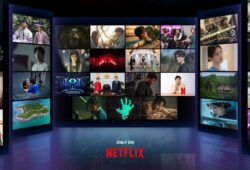-
According to Simply Cast, 83 percent of sports fans also check out social media when watching game in TV
-
More than half of the audiences who come to the stadium are also open to marketing strategies through this platforms
-
In data of Market Watch, just the United States sponsorship market should reach 86.6 billion dollars by 2025
UPDATE: We removed an extra “Measurement” in the main title
One can explain sports marketing in a quite simple manner. It’s a term used to refer to activities brands, publishers and experts develop inside competitive disciplines, including sponsorships, creative activations and reputation building. As such, it has several use cases. It envelops the contracts some stars manage to sign with their teams and all the way to the techniques some businesses use to stay afloat. It’s even involved in the popularity of clubs and ad spaces sales.
That’s why sports marketing is one of the fastest evolving sub-industries in the market. Digitoro points out digital channels have opened new possibilities of interaction between companies and consumers. According to Forbes, new consumer habits and needs also bring up barriers that maybe before weren’t as important or widely recognized. And for the rest of 2020, brands should expect three challenges: Measurement, segmentation and omnichannel experiences.
Measurement: An specially difficult problem for sports marketing
A brand should know how well a campaign is being implemented. However, it can be difficult to estimate the return of investment (ROI). Apptimize believes some companies use models built on top of misleading or incorrect assumptions. Marketing Charts points out that as much as three out of four experts experience this problems regularly. And an an interview with Merca 2.0, Jon Stainer, Managing Director of Nielsen Sports, says this is also an issue in his industry.
There is an ongoing challenge around how you measure the sports marketing investment, in particular with sponsorship deals. That varies depending on what type of brand you are, which industry sector you live in, which consumers you are trying to reach. And one of the challenges that will rise in 2020 is going to be how CMOs prove their strategies are actually driving sales for brands. The second one will be the use of sponsorships to really create brand engagement.
Notas relacionadas
- A competitive marketing industry should focus on creativity, not only on technology
- The power of blockchain in Mexico: How to see past Bitcoin and other cryptocurrencies
- Subconscious marketing: Definition, measurement techniques and case uses for any brand
Segmentation: Understanding the audiences
One of the great abilities of digital channels is that they enable marketing experts to reach a very precise audience. Marketing91 points out this technique boosts customer retention, while also improving the consumer-brand communication. Adding to this, Infiniti Research believes it can improve product and service development and design. The thing is, as some brands think (correctly) that sports have an universal appeal, there is only one big, homogenous market.
This assumption is wrong. Stainer accepts sports audiences have a commonality that brands and agents must understand. However, it is crucial to identify particular necessities and stories.
Companies should be able to segment audiences based on their passion points. We really tune in with the consumers, listen what they do in their leisure time and what interests do they have outside sports. And, that way, we can provide content that talks out to these other passions.
Omnichannel experiences: Marrying all the different marketing tools
There’s one more challenge that brands in this industry should face in 2020. A couple years ago, sports marketing mostly took place inside TV and radio. However, digital channels have multiplied the amount of screens available to the consumers. And audiences want seamless experiences that integrate all the different tools at their disposal. But in the way of the brands and experts, according to Marketing Sherpa, are budget limitations and a lack of knowledge.
However, the Managing Director of Nielsen Sports points out that this is a challenge that the marketing teams can’t put aside. Simply because it will end up in a lot of lost opportunities.
We are in a day and an age of a more immersive consumer, following entertainment and sports in a lot of devices at the same time. They may follow their favorite teams in TV, but also talking in social media and offline with family. Brands need to be at the middle of this conversation.








